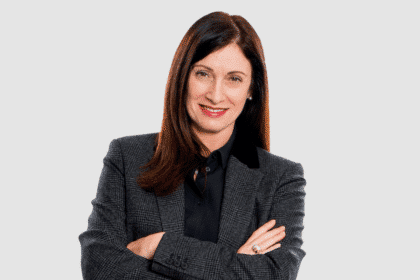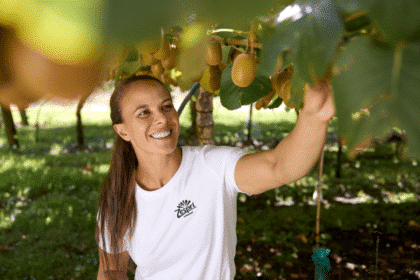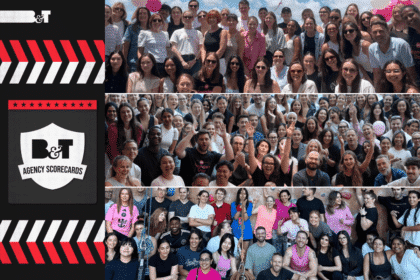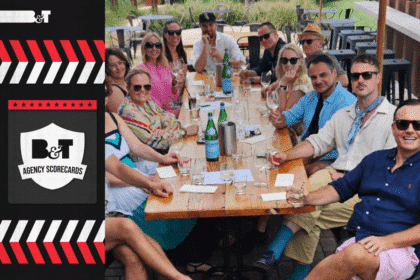Reading the Multicultural Media Review and Policy Report, published in February 2024, shows even specialist multicultural media is falling prey the ruthlessness of big tech’s measurement, data and effectiveness.
While B&T’s headline article published yesterday highlighted the increase in minimum threshold spend in multicultural media from 7.5 to nine per cent, digging a little deeper and the same headwinds all media outlets are facing has found this little niche as well.
This table put together by the NSW Department of Community Service (DCS) tells an all-too-familiar tale:
The spike in 2022 was driven by COVID, however the right-hand extension in 2023 in digital and social combined at the expense of radio and press shows the inevitable march on the global giants even in these super-niche areas. This figure also shows that the combination of press and radio was $1.7 million in FY2019, close to $7 million in FY2022 at the height of COVID-19 and around $3.35 million in FY2023.
The report points to the efficiencies and measurability of the social platforms as being extremely efficient and therefore attractive to OMD.
“Multinational digital platforms such as Meta, YouTube, Weibo, WeChat, and others have well established audience reach and reporting systems. According to OMD, multinational digital platforms provide “sophisticated, measurable and agile products that enable more robust investment decisions into multiple communities”. OMD highlights benefits for their media planners and advertisers on these platforms including:
- Verified and audited media data.
- Sophisticated systems and reporting, and transparent and flexible advertising formats and options.
- Ability to target through mobile devices, geolocation and mobile language settings.
- Real-time tracking of campaigns, comprehensive analytics, and cost-effectiveness via reduction in production and translation costs.
- Options to buy programmatically which allows for a quick media plan execution across multiple communities.
Programmatic digital advertising buying is the dominant way of trading digital media in the industry and, according to OMD, this is often an efficient and effective solution. It is also worth noting that the independent multicultural publishers DCS spoke to do not believe it is feasible for them to trade their digital advertising placements via programmatic platforms.
According to Leba, a large multicultural media sales agency used by OMD to buy First Nations and CALD media, many publishers feel that programmatic advertising is “not worth it” as they end up with a fraction of the actual spend, because of a longer chain of intermediaries in addition to the commission of the programmatic platform. DCS notes that there are different programmatic approaches used across the media industry. Media outlets evaluate the advantages and disadvantages of implementing options to sell their digital media via different methods. Programmatic buying is not essential for NSW Government campaigns.
Media and audience data are key inputs for media agencies and advertisers when making decisions about channel selection and media planning. DCS notes there are limitations on sourcing verified and audited data for the reach of the traditional multicultural media channels. DCS also recognises that in many cases it is not feasible for independent multicultural media to finance surveys to validate their readership.”
The problem for more traditional multicultural channels centres on the omnipresent issue of measurement. This is no different to what happened (and continues to happen) to mainstream media in Australia and the world. Again the report lays it out plainly for all to see.
“Indicative media reach information collated by Leba includes:
- Proof of the number of printed copies from multicultural newspaper publishers.
- A media industry estimate of 2.5 readers per printed publication as a guide for readership of multicultural press.
- Australian Communications & Media Authority (ACMA) data shows that the physical coverage of radio stations overlaid on ABS data for people who speak a language other than English in that area to produce a potential audience figure for in-language programs.
DCS found there is not enough information about the impact and consumption of these publications within communities. Roy Morgan research is a primary source of data to inform advertisers of audience behaviours across media channels including TV, digital, press and radio. This data is influential for media agencies in their channel planning based on the objectives of each campaign. Roy Morgan research is not conducted in-language nor includes specific multicultural media outlets. To understand the media consumption behaviour of multicultural communities, research should include multicultural media and be completed in multiple languages.”
Independent multicultural media publishers consulted for this review raised concerns about the decline of NSW Government advertising in traditional multicultural media.
The level of spend in digital and social media for multicultural and Aboriginal audiences in FY2023 is now similar to the level of spend in total digital and social media (excluding multicultural and Aboriginal media). DCS analysis of total media spend excluding multicultural and Aboriginal media spend (Figure 5) showed that digital and social media accounted for between 40 percent to 50 percent of the total media spend since FY2019.
Press was proportionally lower for this audience, at 3.7 per cent in comparison with 9.7 per cent for multicultural and Aboriginal audiences in FY2023. Similarly, radio spend was 13.4 per cent compared to 22.3 per cent for multicultural and Aboriginal spend.
Digital and social media spend includes multinational digital platforms such as Google, Meta, Weibo, as well as local digital publishers. Possible explanations for the sharp increase in proportion of spend to digital and social media spend for multicultural and Aboriginal audiences from FY2023 include:
- General audience media consumption behaviour moving towards digital channels over time. Digital can provide the opportunity to deliver high reach in a cost-efficient manner with the ability for specific targeting including demographic, interest based, contextual, language and geographic area.
- Increasing industry wide preference with advertisers for communication channels that can deliver data about audience reach and engagement.
- During FY2023, NSW Government ran a higher volume of advertising campaigns, and many of these campaigns were implemented quickly and had a low budget. Digital advertising can be a key channel for these type of campaigns as it has low-cost placement options, ability for quick launch and real-time insights.
- Between FY2020 and FY2022, NSW Government spent $6.6 million of advertising on multicultural and Aboriginal channels across 22 languages in the COVID-19 campaign, including $2.8 million in press. The same level of investment was not maintained in FY2023.
Local multicultural digital products
DCS is aware that many multicultural media have been building their digital capabilities to include websites, social media handles, news applications and eBooks over the past few years. Multicultural media interviewed for this review said they have not received advertising from the NSW Government on their digital products, only their traditional outlets. They said their digital offerings are used by other advertisers and provide meaningful reach to their communities. Examples given include:
- The Greek Herald reports they have 300,000 unique users a month for their website and 2 to 3 million visits a month on social media, according to their publisher Dimitra Skalkos.
- The Chinese Herald owns 1688.com.au which is “the highest ranked Chinese news website in Australia”, according to its publisher Wendy Huang. She reports to have nearly a million visits each month equating to 30,000 to 35,000 unique visitors per day.
During this review, DCS has found that local multicultural digital and social media options could be better promoted to NSW Government and its media buyers. This demonstrates an opportunity for independent multicultural media to publicise their digital advertising options more widely so they can be considered for NSW Government advertising campaigns.
DCS notes that there are different programmatic approaches used across the media industry. Media outlets evaluate the advantages and disadvantages of implementing options to sell their digital media via different methods. Programmatic buying is not essential for NSW Government campaigns.
The balance of digital vs. traditional multicultural media advertising
This review heard from independent multicultural media on how they can effectively deliver government messages to their communities. Their readers are loyal, trusting, primarily in-language, primarily residing in Australia and are actively seeking information when they engage with their publications. Their digital platforms can offer context and relevance with advertising even if they cannot compete with the reach of multinational digital platforms.
According to the NSW Parliamentary report from January 2023, “Improving crisis communications to culturally and linguistically diverse communities”, traditional media is “trusted and important.” DCS also recognises that advertising through independent multicultural media benefits communities directly as they are generally owned by the community.
Through this review, DCS found there was not sufficient evidence to make a recommendation on budget allocation to channels (independent multicultural media vs. digital/ social). Budget allocation needs to be planned according to specific campaign objectives. However, DCS notes the steep increase in digital and social spend in FY2023 and recommends that an action plan is developed by NSW Government and OMD to increase the consideration of traditional multicultural media in briefing, planning and buying media.











